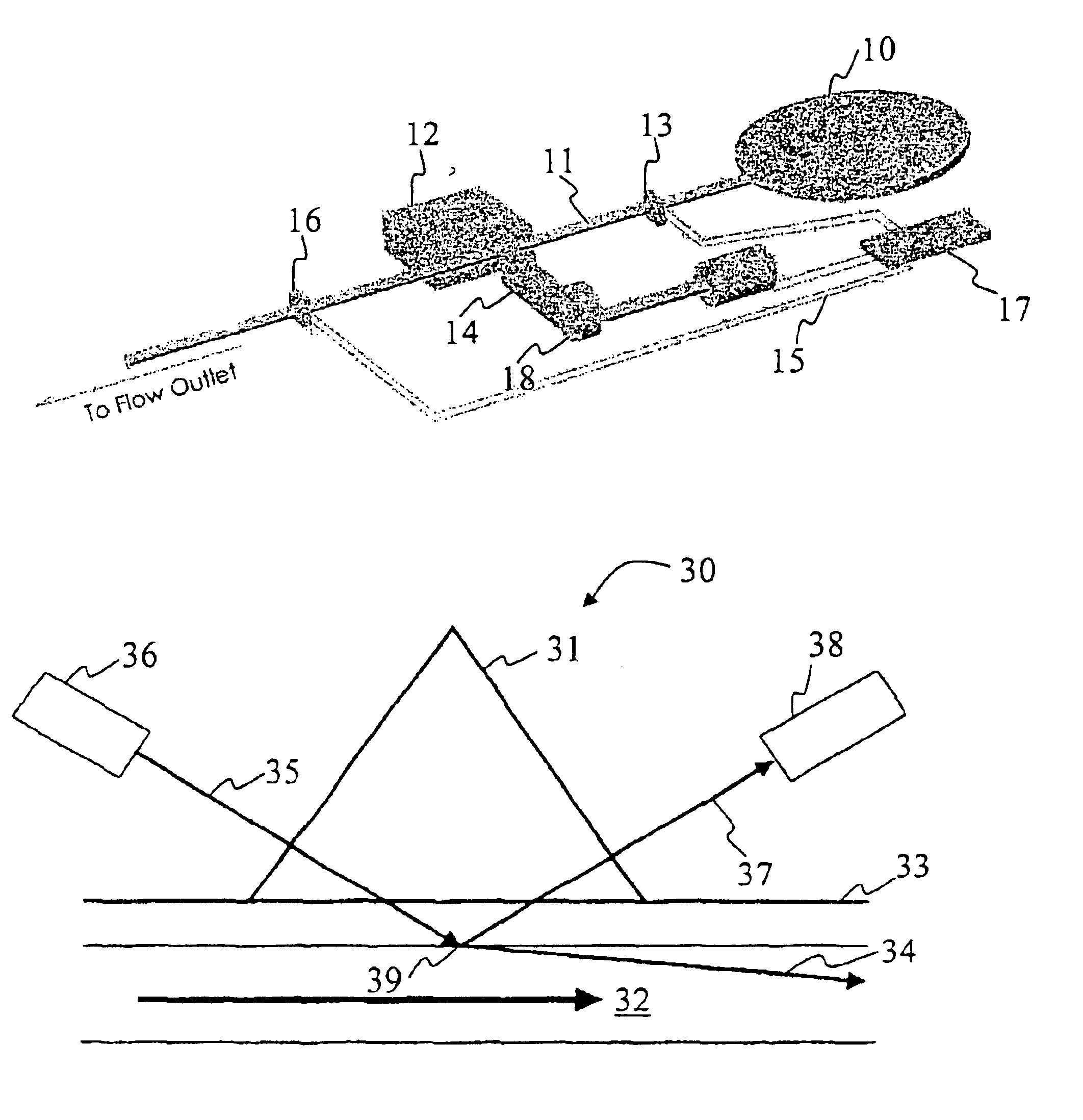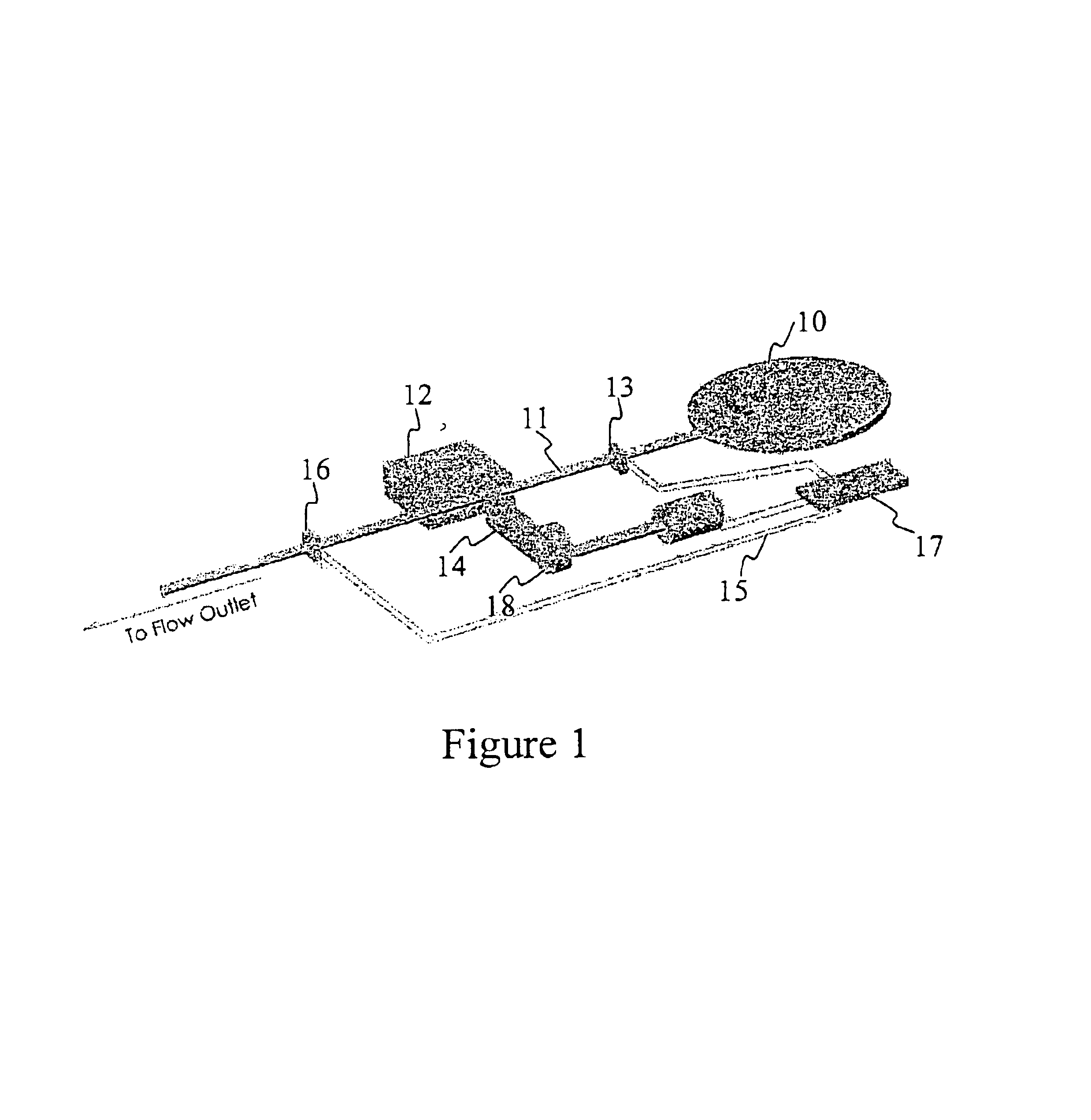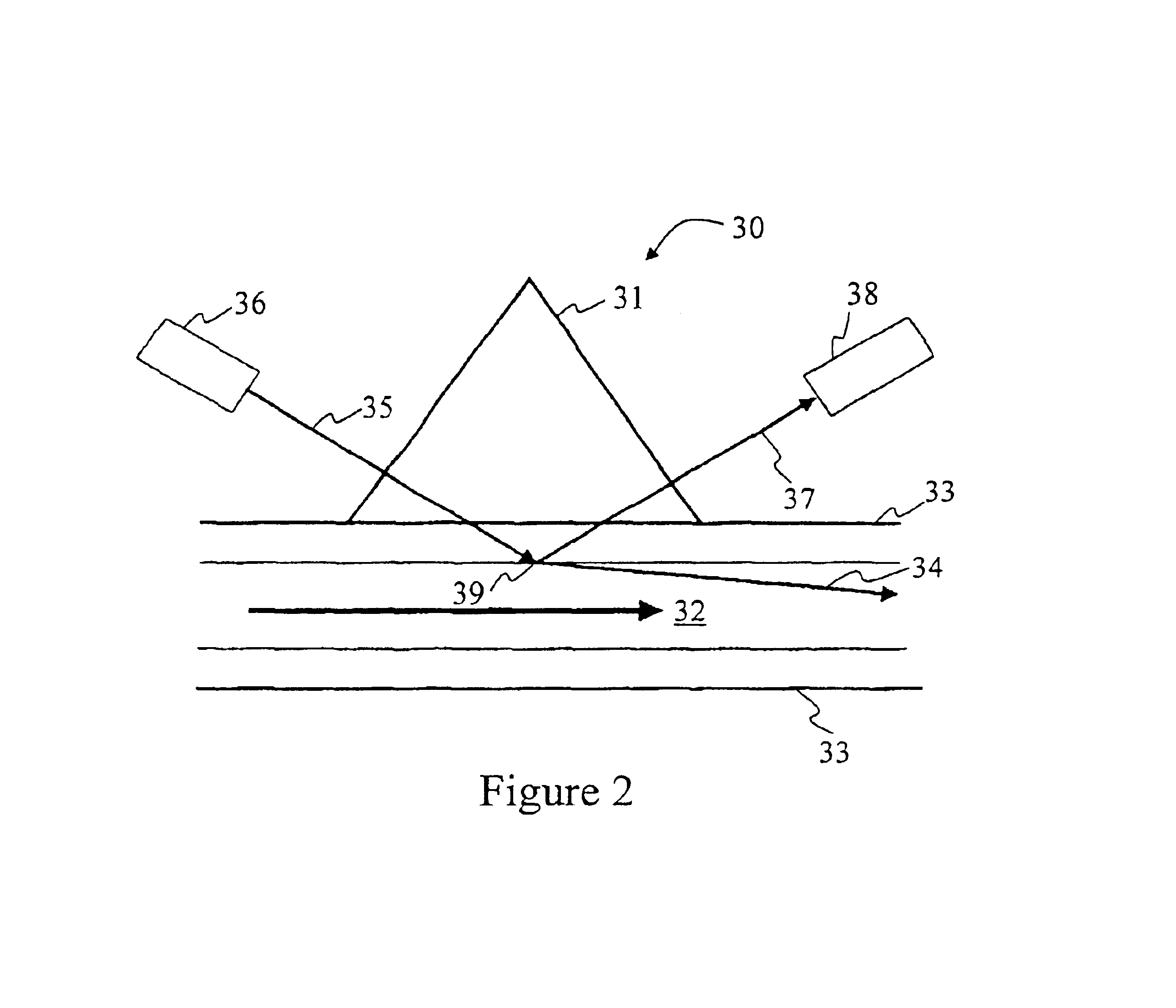Liquid metering system
a liquid metering and liquid technology, applied in the field of liquid metering system, can solve the problems of limited delivery accuracy of +/20%, inability to achieve the required accuracy of pharmaceutical delivery, and rare use of peristaltic pumps
- Summary
- Abstract
- Description
- Claims
- Application Information
AI Technical Summary
Benefits of technology
Problems solved by technology
Method used
Image
Examples
Embodiment Construction
[0023]The optical flow meter of this invention will be described in terms of a liquid dispensing system for use in infusion of pharmaceutical solutions. FIG. 1 shows a block diagram of such a system. The liquid to be dispensed is contained in pressurized reservoir 10. When pinch tube member 14 is moved away from stop 12, conduit 11 is opened and the liquid is free to flow down conduit 11 to the flow outlet. When pinch tube 14 presses conduit 11 against stop 12, stopping flow, the liquid is not free to move down the conduit to the flow outlet. At a selected time, microprocessor 17 signals heating element 13 to heat the portion of the liquid at its location along the conduit. Once the portion of the liquid is heated, the pinch tube member is moved away from the conduit, and the liquid begins to flow. At some later time, the heated portion of the liquid passes heat sensor 16 where the heated portion is detected. The time required for the heated portion of the liquid to move from the lo...
PUM
| Property | Measurement | Unit |
|---|---|---|
| angle of incidence | aaaaa | aaaaa |
| angle of incidence | aaaaa | aaaaa |
| incident/reflected angle | aaaaa | aaaaa |
Abstract
Description
Claims
Application Information
 Login to View More
Login to View More - R&D
- Intellectual Property
- Life Sciences
- Materials
- Tech Scout
- Unparalleled Data Quality
- Higher Quality Content
- 60% Fewer Hallucinations
Browse by: Latest US Patents, China's latest patents, Technical Efficacy Thesaurus, Application Domain, Technology Topic, Popular Technical Reports.
© 2025 PatSnap. All rights reserved.Legal|Privacy policy|Modern Slavery Act Transparency Statement|Sitemap|About US| Contact US: help@patsnap.com



